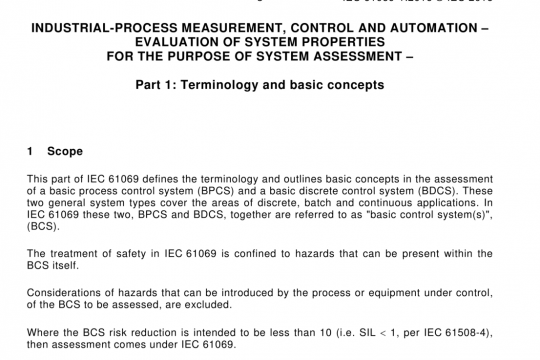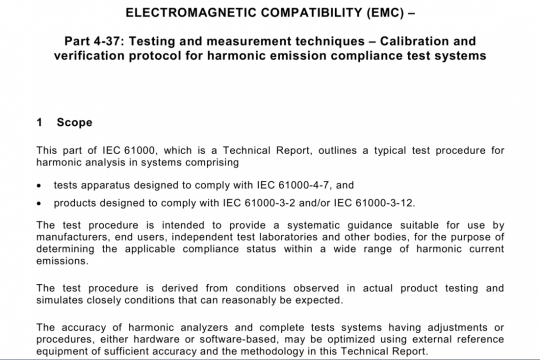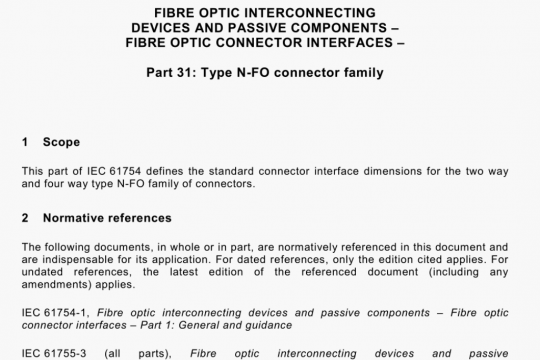IEC 60700-2 pdf free download
IEC 60700-2 pdf free download.Thyristor valves for high voltage direct current (HVDC) power transmission – Part 2: Terminology.
4 General terms related to converter circuits 4.1 converter arm part of a bridge connecting two points of different potentials within a bridge, for example between an AC terminal and a DC terminal Note 1 to entry: The main function of a converter arm is conversion. 4.2 converter bridge equipment used to implement the bridge converter connection, if used SEE: Figure 1 Note 1 to entry: The term bridges may be used to describe either the circuit connection or the equipment implementing that circuit. [SOURCE: IEC 60633: 2015, 6.2, modified — The expression “and the by-pass arm” has been deleted from the definition.] 4.3 converter unit indivisible operative unit comprising all equipment between the point of common coupling on the AC side and the point of common coupling on the DC side, essentially one or more converter bridges, together with one or more converter transformers, converter unit control equipment, essential protective and switching devices and auxiliaries, if any, used for conversion SEE: Figure 1 Note 1 to entry: If a converter unit comprises two converter bridges with a phase displacement of 30 degrees, then the converter unit forms a 12-pulse unit. 5 Converter performance 5.1 forward direction conducting direction direction of current through a valve, when current flows from the anode terminal to the cathode terminal 5.2 reverse direction non-conducting direction direction of current through a valve, when current flows from the cathode terminal to the anode terminal 6 Thyristor valve design 6.1 thyristor bi-stable semiconductor device comprising three or more junctions which can be switched from the off-state to the on-state Note 1 to entry: Devices having only three layers but having switching characteristics similar to those of fourlayers devices may also be called thyristors. Note 2 to entry: The term thyristor” is used as a generic term to cover the whole range of PNPN type devices. It may be used by itself for any member of the thyristor family when such use does not result in ambiguity or misunderstanding. In particular, the term “thyristor” is widely used for reverse blocking triode thyristor, formerly called “silicon controlled rectifier. Note 3 to entry: Thyristors may either be electrically triggered thyristor (ETT) or light triggered thyristor (LTT). 6.2 electrically triggered thyristor ETT thyristor triggered by applying electrical pulses to the thyristor gate Note 1 to entry: This note applies to the French language only. 6.3 light triggered thyristor LTT thyristor triggered by applying light pulses to a photosensitive area within the thyristor gate area Note I to entry: This note applies to the French language only. 6.4 damping circuit snubber circuit circuit (usually consisting of a series connected resistor and capacitor) connected in parallel to a thyristor to reduce the amplitude of the extinction overshoot voltage 6.4.1 damping capacitor snubber capacitor capacitor connected in parallel to a thyristor (usually in series with a resistor) to reduce the amplitude of the extinction overshoot voltage 6.4.2 damping resistor snubber resistor resistor connected in parallel to a thyristor (in series with a capacitor) to limit the amplitude of discharge current of the snubber capacitor after thyristor turn-on 6.5 DC grading resistor resistor connected in parallel to the thyristor to equalize DC voltage unbalance caused by tolerances of thyristor blocking currents Note 1 to entry: In some designs, DC grading resistor also acts as high voltage arm of the voltage divider for monitoring voltage across the thyristor level. 6.6 heat sink separable cooling element, usually through which a heat transfer agent flows, that contributes to the dissipation of the heat produced within the thyristors and other components, if any, in the valve.IEC 60700-2 pdf download.




